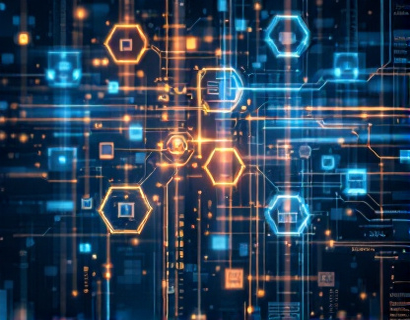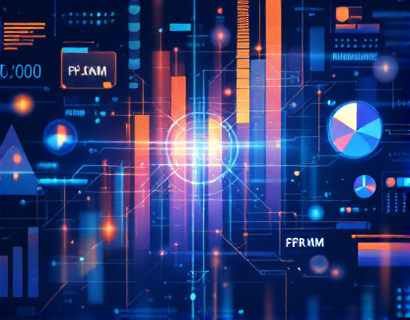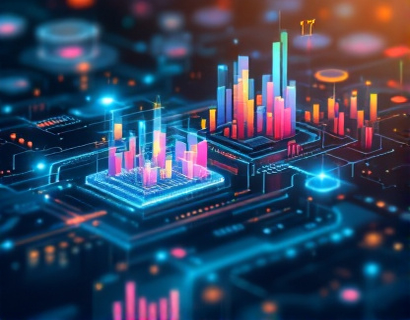Transforming User Engagement in the Ucosystem with Next-Gen Tech Solutions
The integration of blockchain and artificial intelligence (AI) is ushering in a new era of digital transformation, particularly within the tech ecosystem. This synergy is not only redefining how users interact with digital platforms but also unlocking unprecedented opportunities for growth and engagement. As tech enthusiasts and early adopters increasingly turn their attention to cryptocurrency and AI solutions, it's crucial to understand the profound impact these technologies are having on user experiences.
The convergence of blockchain and AI creates a powerful ecosystem where data integrity, security, and user autonomy are paramount. Blockchain technology, with its decentralized and transparent nature, ensures that user data is secure and tamper-proof. AI, on the other hand, brings intelligence and personalization to the forefront, enabling platforms to understand and predict user behavior with remarkable accuracy. Together, these technologies are reshaping the digital landscape, making interactions more seamless, secure, and engaging.
Enhancing Security and Trust
One of the most significant benefits of integrating blockchain into digital platforms is the enhancement of security and trust. Blockchain's immutable ledger ensures that once data is recorded, it cannot be altered or deleted. This feature is particularly valuable in an era where data breaches and cyber threats are rampant. Users can have confidence that their information is safe and that transactions are verifiable and transparent.
AI complements this by providing advanced security measures such as anomaly detection and predictive analytics. These tools can identify potential threats in real-time, allowing platforms to take proactive measures to protect user data. The combination of blockchain and AI creates a robust security framework that not only safeguards user information but also builds trust, a critical factor in user engagement.
Personalization and User Experience
AI-driven personalization is revolutionizing user experiences across various digital platforms. By analyzing vast amounts of user data, AI algorithms can tailor content, recommendations, and interactions to individual preferences. This level of personalization ensures that users receive relevant and valuable information, increasing their engagement and satisfaction.
Blockchain adds another layer of personalization by enabling users to have full control over their data. Through self-sovereign identity solutions, users can manage their digital identities and decide who has access to their information. This empowerment not only enhances user experience but also fosters a sense of ownership and autonomy, which are highly valued in the tech community.
Dynamic Content Delivery
AI algorithms can dynamically adjust content based on user behavior and preferences, ensuring that each user sees the most relevant information. For instance, a news platform can use AI to curate a personalized feed, presenting articles that align with the user's interests and reading history. This dynamic content delivery keeps users engaged and reduces the likelihood of them disengaging from the platform.
Blockchain ensures that this personalized content is delivered securely and transparently. Smart contracts can automate content delivery based on predefined conditions, such as user consent or payment verification. This automation not only streamlines the user experience but also reduces the risk of errors and fraud.
Decentralized Applications and User Engagement
Decentralized applications (dApps) are at the forefront of leveraging blockchain and AI to enhance user engagement. Unlike traditional applications that rely on centralized servers, dApps operate on decentralized networks, providing users with greater control and privacy. AI enhances these applications by adding intelligent features such as chatbots, predictive analytics, and automated decision-making.
For example, a decentralized gaming platform can use AI to create adaptive gameplay experiences, adjusting difficulty levels and offering personalized challenges based on the player's skills and preferences. The use of blockchain ensures that in-game assets and achievements are securely stored and tradable, adding a new dimension of value and engagement for users.
Tokenization and Incentivization
Tokenization, a process enabled by blockchain, allows for the creation of digital tokens that represent value within a specific ecosystem. These tokens can be used to incentivize user engagement, reward participation, and facilitate transactions. AI can optimize token distribution and usage, ensuring that incentives are aligned with user behavior and platform goals.
For instance, a social media platform can introduce a native token that users earn by creating and sharing high-quality content. AI algorithms can analyze content performance and distribute tokens based on engagement metrics, encouraging users to produce more valuable content. This token-based incentivization not only boosts user engagement but also fosters a community-driven environment.
Predictive Analytics and User Insights
AI's ability to process and analyze large datasets provides invaluable insights into user behavior and preferences. Predictive analytics, a subset of AI, can forecast user actions and trends, enabling platforms to anticipate and meet user needs proactively. This foresight is crucial for maintaining high levels of engagement and satisfaction.
Blockchain ensures that the data used for predictive analytics is secure and tamper-proof. Users can trust that their data is being used ethically and transparently, which further enhances their trust in the platform. AI-driven insights can help identify new opportunities for engagement, such as personalized marketing campaigns or targeted feature enhancements.
Fraud Detection and Prevention
Fraud remains a significant concern in the digital space, affecting user trust and engagement. AI-powered fraud detection systems can identify and mitigate fraudulent activities in real-time, protecting both the platform and its users. By analyzing patterns and anomalies, these systems can detect suspicious behavior and take immediate action, such as blocking fraudulent transactions or accounts.
Blockchain's transparency and immutability further strengthen fraud prevention efforts. Every transaction is recorded on the blockchain, providing a clear and auditable trail. This combination of AI and blockchain creates a formidable defense against fraud, ensuring a secure and trustworthy environment for users.
Community Building and Governance
The integration of blockchain and AI is not only transforming individual user experiences but also revolutionizing community building and governance within the tech ecosystem. Decentralized autonomous organizations (DAOs) leverage blockchain to create transparent and democratic governance models. AI can enhance these models by providing data-driven insights and automating decision-making processes.
For example, a DAO managing a decentralized platform can use AI to analyze community feedback and propose governance changes. Smart contracts can then automate the implementation of these changes, ensuring that the platform evolves based on user input and consensus. This hybrid approach fosters a sense of community ownership and active participation, driving higher engagement and loyalty.
Transparent and Fair Rewards
In a DAO, tokens can be used to reward community members for their contributions, such as content creation, moderation, and governance participation. AI can optimize the distribution of these rewards, ensuring that they are fair and aligned with the community's goals. This transparent and equitable reward system encourages active participation and fosters a vibrant, engaged community.
Blockchain ensures that all transactions and reward distributions are recorded and verifiable, eliminating the risk of manipulation or bias. Users can trust that the system is fair and that their contributions are valued, which significantly enhances their engagement and commitment to the community.
Challenges and Future Prospects
While the integration of blockchain and AI offers numerous benefits, it also presents challenges that need to be addressed. Scalability, regulatory compliance, and user education are key areas that require attention to fully realize the potential of this synergy.
Scalability remains a significant hurdle for blockchain technology, as many networks struggle to handle high transaction volumes. However, advancements in layer 2 solutions and blockchain interoperability are paving the way for more scalable and efficient systems. AI can play a role in optimizing blockchain performance by predicting and managing network loads.
Regulatory frameworks are still evolving, and the intersection of blockchain and AI adds complexity to compliance efforts. Platforms must navigate varying regulations across jurisdictions while ensuring that user privacy and data security are maintained. Collaboration between regulators and tech innovators is essential to create a balanced and supportive environment.
User education is crucial for widespread adoption. Many users are still unfamiliar with blockchain and AI concepts, which can hinder their willingness to engage with these technologies. Providing accessible educational resources and user-friendly interfaces can help bridge this knowledge gap and encourage more users to explore and benefit from these innovations.
Conclusion
The integration of blockchain and AI is transforming the tech ecosystem by enhancing security, personalization, and user engagement. These technologies are not only redefining digital interactions but also unlocking new opportunities for growth and innovation. As the ecosystem continues to evolve, it's essential for tech enthusiasts and early adopters to stay informed and embrace these advancements. By doing so, they can fully leverage the potential of blockchain and AI to create more secure, personalized, and engaging digital experiences.










































